How to Set the Theme for Your eCommerce Startup Website – Tips to Consider

Featured Image: Freepik.com/storyset
Different themes cater to different audiences, so it’s essential to find one that will work best for you. For instance, a fashion-oriented theme would be perfect for you if you’re running an online clothing store. A book-themed website might be more appropriate if you’re selling books.
When launching an eCommerce startup, it is important to consider the type of website theme that you want for your company. This will determine how your customers will perceive your brand. Many different elements go into setting a theme for your website. You must consider colors, fonts, images, layouts, and more.
Setting the theme of your website is one of the most important steps in the process. It is a good idea to consider what your site will look like before you start designing it.
You can find many free eCommerce themes online on platforms like Shopify and Woocommerce that can be a good starting point for your design. But if you want to create something unique and original, you should consider hiring a professional web designer or developer who can make you a custom website.
If you still really like a template, then ask a designer to semi-customize it. Edit it just enough so it just right for your business. Once your custom theme is ready, it can be integrated into content management platforms that will help you run the website and maintain it without hurdles.
Let’s learn how to set the theme for your eCommerce startup website.
Understand Your Business
The first thing to do is to identify the type of business you are running. This will help you decide what website themes are appropriate for your website. For example, if you are selling a product used by a niche audience, choosing a theme that matches their interests would be best. An electronic eCommerce store cannot have a Barbie theme unless they want to go for an unconventional appeal.
Evaluate Your Target Audience
Ecommerce startups must ensure their target audience is ready to buy from them. They need to create a website that is easy to navigate, has great content and design, and has a clear call to action.
A good start would be evaluating your target audience by asking these questions:
- What are the demographics of my target audience?
- What are their interests?
- What do they like on social media?
- What are their ecommerce habits?
To get more specific, you could also ask them about yourself by conducting a survey.
Observe Industry Standards
When designing the theme for your eCommerce startup, it is advisable to explore the industry standards. For example, the color scheme of healthcare businesses is often set to the shades and tints of blue and green. For your online pharmacy store, will you use these two colors? Once you know the design standard in your industry, it becomes easier to follow the rules or break them.
Figure Out Website Components
To set the theme of your eCommerce business website, you need to figure out all the elements necessary to build an attractive and well-functioning website.
A good eCommerce website design provides a user-friendly interface that can be navigated easily. The design should also make it easy for users to find and purchase what they are looking for.
A well-designed eCommerce website will have:
- An attractive branding, mainly the logo design
- An attention-grabbing home page design
- Easy-to-use navigation with clear indications
- A convenient display of products with descriptions
- A trouble-free checkout process with a secure payment option
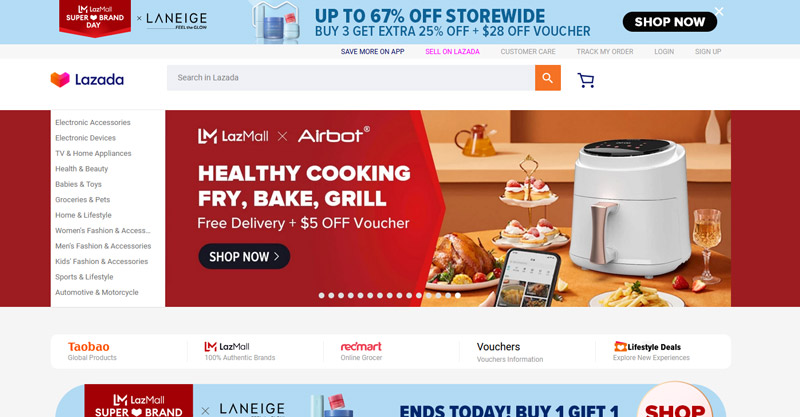
Image Source
Now that the pie crust is well-defined let’s move on.
How to Set the Theme for Your eCommerce Startup Website
Setting the theme for your eCommerce startup website is a critical step in building a successful site. A suitable theme can make your website look more professional and give it a unique personality.
Themes are a crucial part of any website. They can be used to set the tone for your website as well as to provide a unifying look and feel for all the pages on your site.
There are many different types of themes to choose from, and you must pick one that matches the design style of your site. This will help make sure that everything flows together nicely.
So, how do you design a unique theme for your eCommerce business?
1) Say No To Templates
Avoid following a template that many other businesses may have used. The website’s design must be distinct to stand out as an eCommerce startup store.
The best way to design your eCommerce website is by starting from scratch. Templates limit designers in terms of creativity. Here is how to be original:
- If you’re the designer, ask your client their design expectations to ensure you design something tailored to them.
- Use modern contemporary design styles and web development language to make sure the website is optimized for the latest search engine updates.
- Ensure to include interactive features like sign-up forms, discount availing games, and trendy catalog layouts.
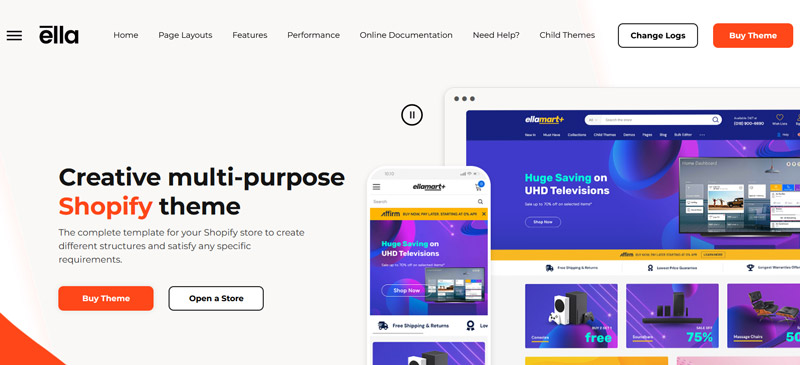
Image Source
The above example is of a top Shopify template but as you can see it is publicly available to buy, and that’s the problem with templates. Any one can buy them, so if you do too, which you can (your choice), then your website will have nothing unique in it. To make an outstanding eCommerce website theme, customize the web design.
2) Choose The Right Color Scheme
Every eCommerce website needs to have a color scheme that is attractive and inviting. Colors can evoke different emotions in people, and choosing a color scheme that will appeal to your customers is important.
Choosing a befitting color scheme for your eCommerce website is one of your most important design decisions.
The right color scheme can make a huge difference in the success of a business. It can turn your visitors into customers and make them stay on your website for longer.
Since colors have different meanings, choosing the right color for your company is important. For example, blue is often associated with trustworthiness and reliability, while red is associated with danger or excitement.
The way to go about deciding the correct color palette for your eCommerce website includes the following ways:
- Follow the color wheel to make complementary or contrasting combinations.
A color wheel is a tool that can be used to choose colors for your eCommerce website. It contains all the colors of the spectrum, which are arranged in a circular pattern according to their hue. The best eCommerce website themes are designed around a color palette that reflects the personality of your brand and the products you offer.
- Take help of online tools that help in creating color palettes.
These online color tools can help you find the perfect color scheme based on trending colors, popular palettes, and more. Some of these tools will give you a pre-made color scheme, while others will let you customize it to your liking.
- Stick with the industry guidelines to make the right palette.
The key to a successful web design is to use appropriate colors for the industry guidelines. For example, if you are in the fashion industry, you should ensure that your website has bright and bold colors.
- Focus on the emotions and moods each color represents.
Color is an important part of eCommerce website themes. It can set the mood, evoke emotion, and even change our perception of a product. The right color scheme can help to make your products more appealing, while the wrong one can leave your customers feeling cold.
- Use brand colors to create a color scheme for the website.
The color palette that defines your brand can be used to design your website. This is another way to make a winning color combination for your eCommerce store.
- Apply the color theory of shades, tones, and tints to make a color scheme.
A color scheme is also important when designing a website theme because it can affect how people feel about your company, the products or services they offer, and how they feel about buying from you.
3) Plan Website Layout
Ecommerce websites are a different breed of website. They need to be designed in a way that is conducive to conversion. That’s why it’s important to plan the layout of your eCommerce store.
Your eCommerce store’s layout will affect how you design your website and how you use space on the page. The layout of your store also determines how visitors navigate through your site and what they see first when they arrive at your site.
One way to figure out what layout would work best for your eCommerce store is by looking at examples of other stores with a similar product range and style.
To ensure that your website is successful, you must consider all aspects of the layout – from the design to the content and the navigation to its usability.
When designing a theme for your eCommerce startup website, you must focus on two main aspects: structure and style. The structure includes elements, navigation, and a content management system. The style comprises responsiveness, typography, layout, and color. When working with the layout, all these things matter in creating a dynamic composition for the eCommerce store.

Image Source
4) Create Catalog Composition
A product catalog is the most important tool for any eCommerce website. It’s a list of all the products available on the site, and it is what drives sales.
The design and quality of your product catalog will directly affect how well your website sells. A well-designed catalog will be able to convert more visitors into customers than a poorly designed one, and it will also be easier for customers to find what they want.
An eCommerce website can have many different product catalogs, but there are two main categories: static and dynamic.
The catalog should contain the following elements:
- Product images in high resolution
- Detailed descriptions
- Pricing info
- Clickable call to action button
A well-designed catalog can help customers find what they are looking for by using search filters, sorting options, and category navigation. It should also be easy to navigate between pages and find what they want to buy. A good catalog will also include descriptions of each product to give customers a better idea of what they are buying before they purchase it.
Product catalogs can be composed of images, text, and video to help customers understand what they are buying. Some product catalogs will also include customer reviews and ratings for each product.
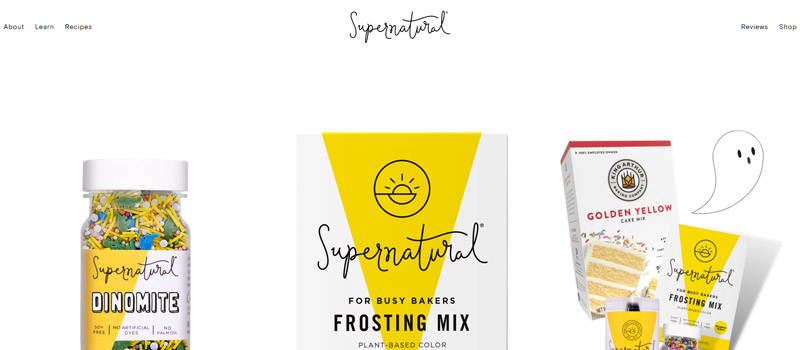
Image Source
5) Make Navigation Acessible
Navigation is one of the most important aspects of any website, and it’s even more important for ecommerce sites. It’s not just about having a clear, intuitive navigation system; it’s also about making sure that your site is easy to navigate and that customers can find what they need quickly and easily.
For example, if you have a section on your site for “clothing”, then you should have a link to this section on the homepage. You should also make sure that this link is visible when people first arrive on your website, so they can see it before scrolling down.
The key to a successful ecommerce website theme is to make navigation as convenient as possible. From the home page, to the product pages, and finally the checkout process, it should be easy for visitors to find what they are looking for.
One way of doing this is by using a navigation menu which can be found in the header or sidebar. This menu should have links that are labelled and easy to follow. Another option is to use breadcrumbs which will lead visitors through every step of their journey on your site. If you use these methods correctly, you will find your conversion rates increase significantly.
It can be a challenge to make navigation easy in ecommerce websites but there are some tricks that can help you out.
- Use a dropdown menu: This type of navigation is very popular in ecommerce websites and it helps visitors find what they need quickly. You can also use it to add more subcategories if you have more products than you would like on one page.
- Keep it simple: Navigation should be simple and straightforward so visitors don’t get confused or frustrated with your website. You should keep navigation limited to three or four options at most, with one being your homepage option at all times.
- Use icons: Writing words on the buttons in the navigation bar can be tricky when there are too many categories in your eCommerce website. Thus, it is often easier for both the designer and the customer to follow universally accepted or self-explanatory icons.
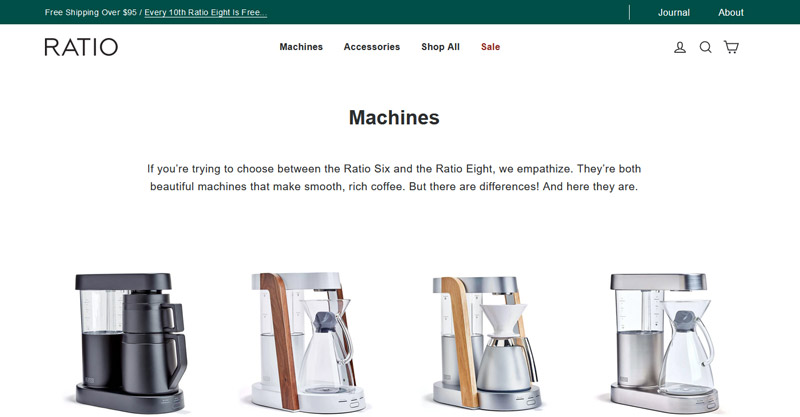
Image Source
6) Get Technical With Development
Ecommerce website theme development is a process that requires expertise in both graphic design and programming. This covers the technicalities of developing an ecommerce website. The process includes selecting the right technologies and languages, designing the site and integrating with payment gateways.
There are three types of languages used for ecommerce website theme development:
- HTML is the markup language that is used to define the structure of a web page.
- CSS is the styling language that defines the appearance of content on a webpage.
- JavaScript is the scripting language which can be used to create interactive effects, animation, and dynamic content.
Ecommerce website theme development is not just about designing a website. It is about understanding the client’s business goals and requirements to deliver an end-to-end solution that will help them achieve their goals.
An ideal ecommerce website should be developed using the latest technologies in order to provide a seamless experience for the user.
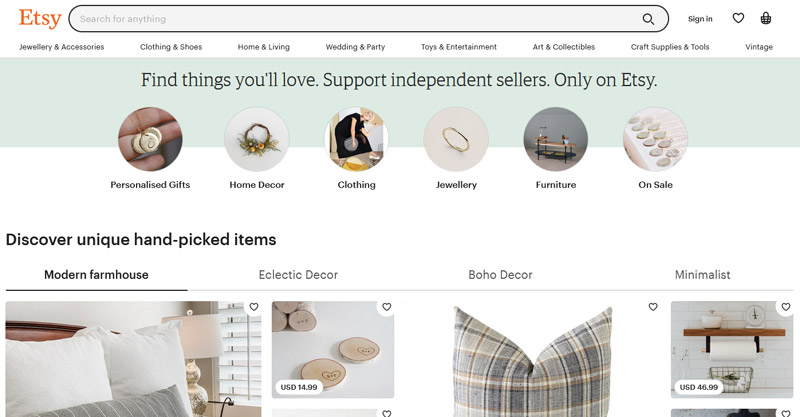
Image Source
Now that you know what goes into making a theme for your eCommerce startup website, you can start a contest today to start your business with a kickass theme.


